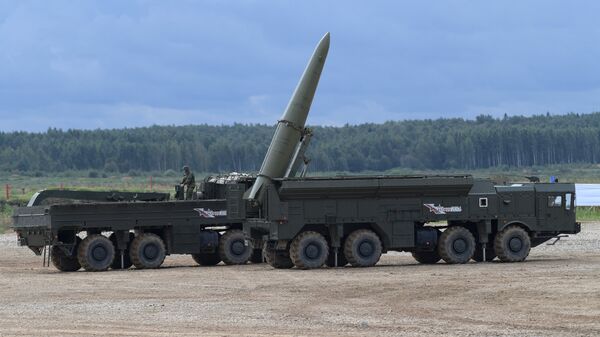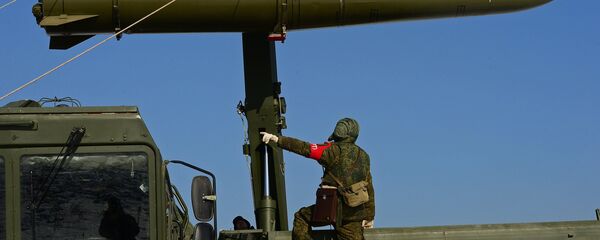"All the missile units will be re-equipped with the Iskander-M (NATO reporting name SS-26 Stone) mobile ballistic missile systems and the rocket artillery brigades – with state-of-the-art multiple launch rocket systems Tornado-S," he elaborated.
The Iskander-M is a mobile ballistic missile system designed to destroy a wide variety of ground targets at a range of up to 500 kilometers (over 300 miles).
On Saturday, the Russian Defense Ministry released footage of the first launch of an Iskander-M missile launch outside of Russian territory.
The launch was conducted as part of the Russia-Tajikistan joint drills dubbed "Dushanbe-Counterterror."
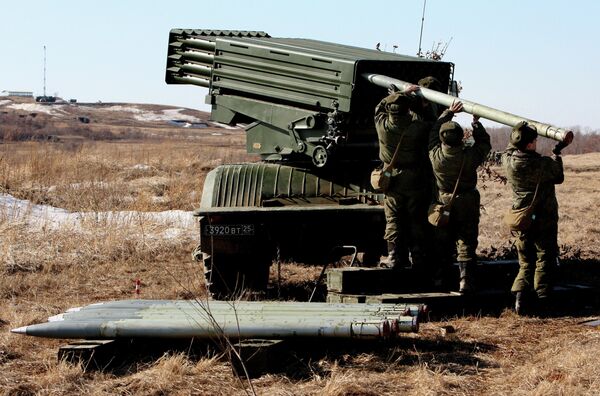
During the final stage of the exercises, the Missile Forces military destroyed simulated terrorists, while located 140 kilometers from the 'enemy' target.
The Russian Ground Force's artillery brigades will begin receiving state-of-the-art Koalitsiya-SV self-propelled guns with innovative multi-round simultaneous impact firing capabilities, able to deliver several volleys at various trajectories to engage a target at the same time.
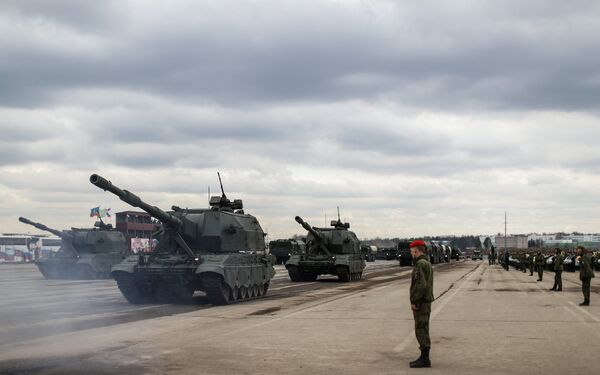
Koalitsiya-SV self-propelled guns will serve as the blueprint for robotized artillery systems in the future, Maj. Gen. Matveevsky elaborated.
"We can speak about creating fully robotic artillery systems that perform tasks without human intervention in the future," he said.
He highlighted the self-propelled gun's unmanned combat compartment and its automated guiding and armament loading capabilities.
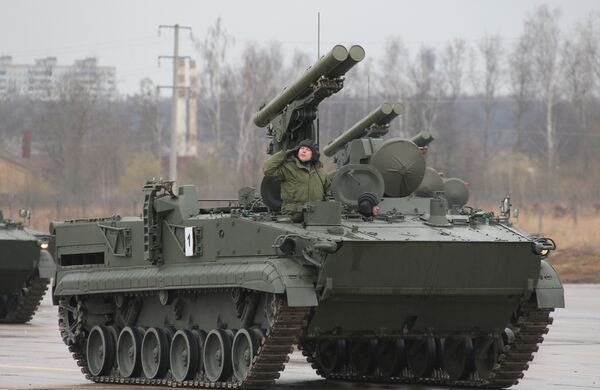
Russia's anti-tank sub-units will continue receiving state-of-the art Khrizantema-S and the Kornet Anti-Tank Guided Weapons (ATGW), which are designed to detect and destroy the existing and future main battle tanks (MBTs), armored tanks, low-flying aerial targets, lightweight surface targets, and field fortifications, including steel shelters and bunkers, in both day and at night under all weather conditions. The weapons offer a high-rate of fire and are protected against electronic countermeasures.
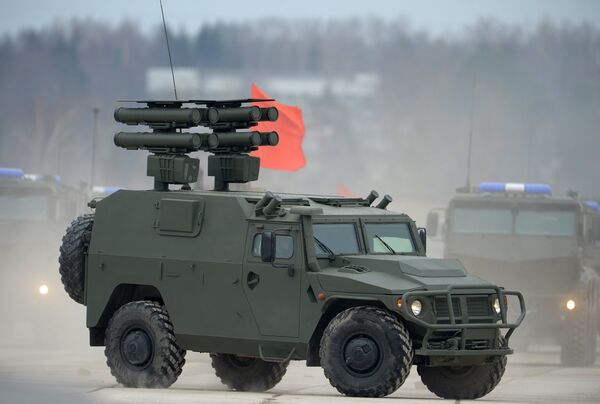
"The new state program is also aimed at the development of advanced weaponry with radically new operational and combat capabilities. This will create pre-conditions for the weaponry which will surpass the existing samples by one or even two generations," Matveevsky concluded.

